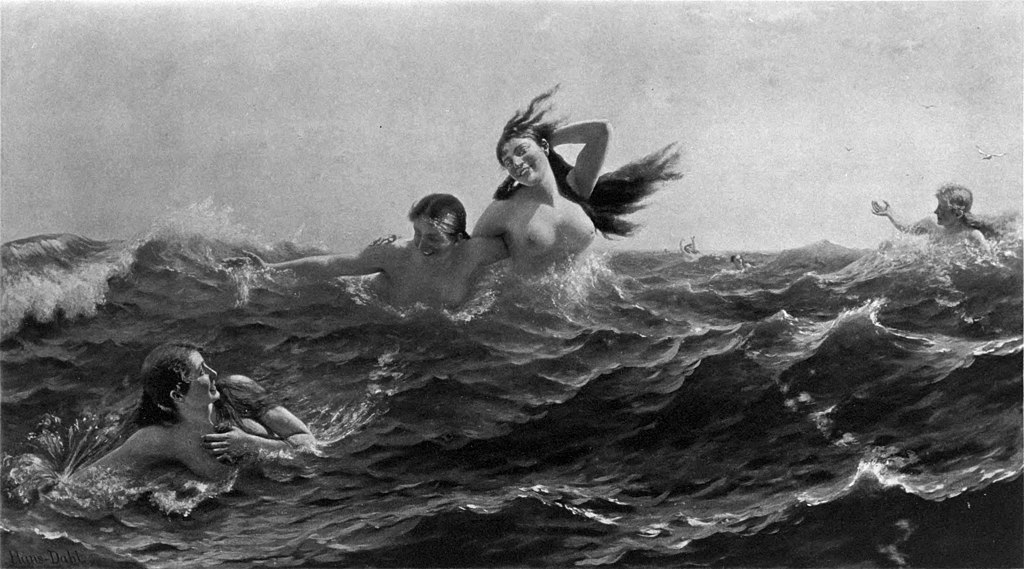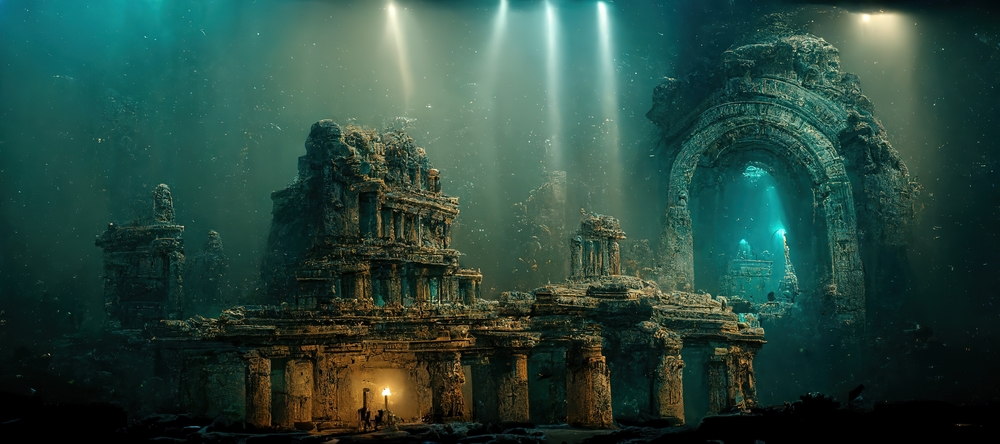Aegir and Rán are married deities in Norse mythology. Together they rule the seas much like the Greek god Poseidon. They are the personifications of the sea, and the deities seafarers of the Viking Age prayed to for safe voyages.
In Norse mythology, Njord is technically considered the god of the sea. Since he is a Vanir god that lives in Asgard and has little direct contact with the ocean itself, the jötunn Aegir and goddess Rán are more closely tied to the sea in Norse mythology.
They share parallels with the Greek god Poseidon and the Roman god Neptune.
Aegir and Rán: the rulers of the sea loved by the gods
Both Aegir and Rán were friendly with the Norse gods, which was notable since Aegir was a giant and not a god himself (giants were usually considered enemies of the Norse gods). Aegir was affectionately known as a gracious host.
The Norse gods would visit Aegir and Rán in their great hall beneath the sea. Aegir often made a feast for the Æsir gods, using a huge kettle borrowed from Hymir by Thor.
Aegir and Rán not only ruled the sea but were also the Billow Maidens’ parents, known as the nine daughters of Aegir and Rán.
Is Aegir a giant or a god?
Aegir is a jötunn, therefore, a giant.
Unlike his mischievous wife, the sea goddess Rán, Aegir is known to be a gracious host. He is the personification of the benevolent aspects of the sea, bringing voyagers to their destination safely.
Although Aegir technically is not a Norse god, he was well-loved among the Æsir gods and considered a sort of honorary god himself.
Aegir means “sea,” but this giant was known by other names as well:
- Eagor: Tidal bore or a high wave caused by dangerous tidal flows
- Gymir: The concealer
- Hler: The shelterer
Is Rán a giant or a goddess?
Rán is a goddess, though it is never mentioned whether she is an Æsir or Vanir goddess.
The sea goddess Rán was said to be the bringer of all storms in the sea. She was known as the embodiment of the ocean’s sinister side. Rán means thief, plunderer, and robbery.
With her vast magical net, she sought to drag hapless humans down to the depths of her ocean realm. When the sea goddess was done with their souls, she would send them to Hel, the goddess of death.
Like her husband, Rán was also close with other Norse gods. When Loki tried to catch the dwarf Andvari, he borrowed Rán’s giant net. Andvari had turned himself into a pike fish to evade Loki, but he was captured. Loki then forced Andvari to give up his golden riches.
During the Viking Age, seafarers dared not cross the sea goddess Rán. Before heading out on a voyage, they would pray for good ocean conditions and even offer up gifts (Some of these offerings have been found in Lake Tissø, Denmark).
They believed that any voyager who angered Rán would be drowned, dragged down into the depths of the ocean to live for all eternity.

Aegir and Rán’s daughters: the Billow Maidens
Aegir and Rán had 9 daughters, known as the Billow Maidens. While Aegir and Rán personify the sea itself, their daughters are the personification of waves.
The names of the nine daughters are mentioned in Skáldskaparmál from the Prose Edda. Each daughter’s name reflects the poetic term for a certain type of wave:
- Blóðughadda: means “bloody hair” and describes waves with a reddish foam on the top.
- Bylgja: billowing wave.
- Dröfn (also called Bára): foaming sea wave.
- Dúfa: a pitching wave, which is a wave that is just starting to break with foam.
- Hefring or Hevring: a lifting wave, which is a swell just starting to take the shape of a wave.
- Himinglæva: a wave that is transparent on top.
- Hrönn: a swelling wave.
- Kólga: a cold wave.
- Uðr or Unn: a frothy wave; (Uðr is also a name used for Odin and the word river).
While the names of the nine daughters of Aegir and Rán don’t match the names of the nine sisters of the sea, many believe these nine to be the same. Because of this, many scholars are convinced the Billow Maidens were also the nine mothers of Heimdall, the son of Odin.

Attestations in Old Norse Literature
Aegir and Rán are mentioned often in the Prose Edda and Poetic Edda. Several other sagas and poems also contain attestations of them. Icelandic poets, known as skalds, wrote tragic poetry lamenting the deaths of loved ones who drowned at sea well into the 10th century.
Most of these accounts focus on Rán, the sea goddess and ruler of the bottom of the sea. The people of the Viking Age believed that’s where all drowned sailors ended up after the sea goddess Rán caught them in her net and drowned them.

